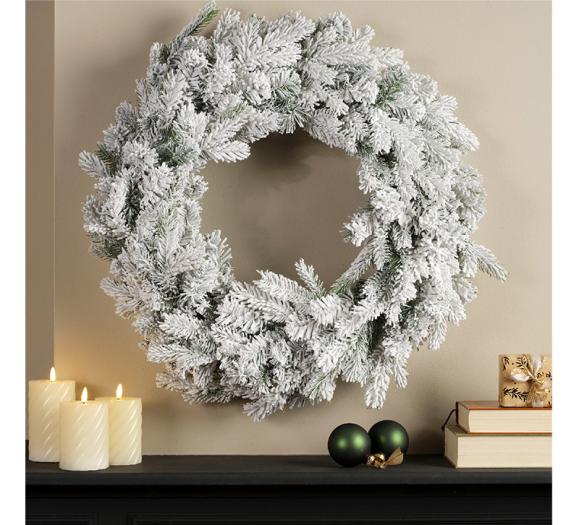Floral designer Ed Glenn, CEO of New Growth Designs, has collaborated with horticulturalist and founder of Weston Farms, Erin Weston, to introduce an archival quality three-dimensional magnolia bloom. It's the first collaboration of its kind, pairing a permanent floral brand with a fresh floral grower. The Weston Farms Magnolia Bloom by New Growth Designs is an exceptional quality permanent flower, exacting in detail and meticulous in craftsmanship, from veins on the petals to an accurate petal design. The ephemeral nature of real magnolia blooms, lasting only one day, prompted Weston to seek out an alternative floral to pair with the farm’s fresh foliage, which dries beautifully and lasts for years.
“Most botanical replicas of magnolia are full of inaccuracies and flights of the imagination,” says Weston. “What we tried to do is go back to nature and study the bloom.”
The Weston Farms Magnolia Bloom by New Growth Designs features thick, milky-white, rounded petals with natural veining. It will be available in two sizes: an 8-inch bloom and a 5-inch bloom. Both will have an 8-inch stem with a removable clip — called a Fastenator — that can be used to attach the bloom to other stems in an arrangement, or to fasten it to a wreath or garland.
“Our goal was to replicate this fleeting flower at its most beautiful stage, after it has just opened in the morning, and to create a bloom with botanical accuracy,” says Glenn.
In May 2019 when the bloom season started at Weston Farms, Weston and Glenn began collaborating on a southern magnolia bloom, examining every detail to replicate nature in its peak beauty. Hundreds of flowers were collected, dissected and photographed at the farm and sent to Glenn in China. There he worked with artisans to create an archive of the Weston Farms Flower. Samples were made by hand and each round became a step closer to capturing this bloom.
Using nature’s design as the model is no easy task. The bloom season is short and the bloom itself only lasts a day. It is probably why faux blooms have little or no resemblance to a real flower.
“I see Ed’s role as that of an artist in a quest for capturing nature in that moment of glory when it is the most beautiful,” says Weston. “In this case the peak is only a few hours after the flower has opened. I’d never considered faux magnolia blooms to accompany our long-lasting leaves before now because I couldn’t find anything to match what bloomed on our trees.”
Both Weston Farms and New Growth Designs will keep the product in inventory and customers can purchase from either company.
After the day breaks and the dew begins to disappear, the Weston Farms magnolia flower begins to open from a bloom bud resembling a swan’s head. The thick ivory petals slowly unfurl revealing a very special center. The center of the flower is called the Gynoecium and the ancient design is found in very few flowers. It’s made up of hundreds of small pistils that contain pollen and attach to the center. It is from this center that a sweet citrusy aroma emanates becoming most pungent in the evening. The exotic fragrance fills the sultry air and entices pollinators to visit the bloom. The primal fragrance is one of the oldest on earth and gives rise to future scents in flowering plants. By days end the fuchsia tipped pistils resembling match sticks have fallen and the petals have turned brown painting the ground. What remains on the tree after the flower fades is the gynoecium. This is where the seeds will begin to ripen promising another generation of life. It is with this center point of the bloom, the gynoecium of the magnolia, where Glenn and Weston began a rigorous conversation and study to preserve a magnolia flower.
“When Audubon studied the birds of America he set out to capture nature. It became art for the ages. I think the process of replicating this bloom has been done with an intellectual and artful rigor much like a scientist illustrating the first records of nature,” says Weston.







